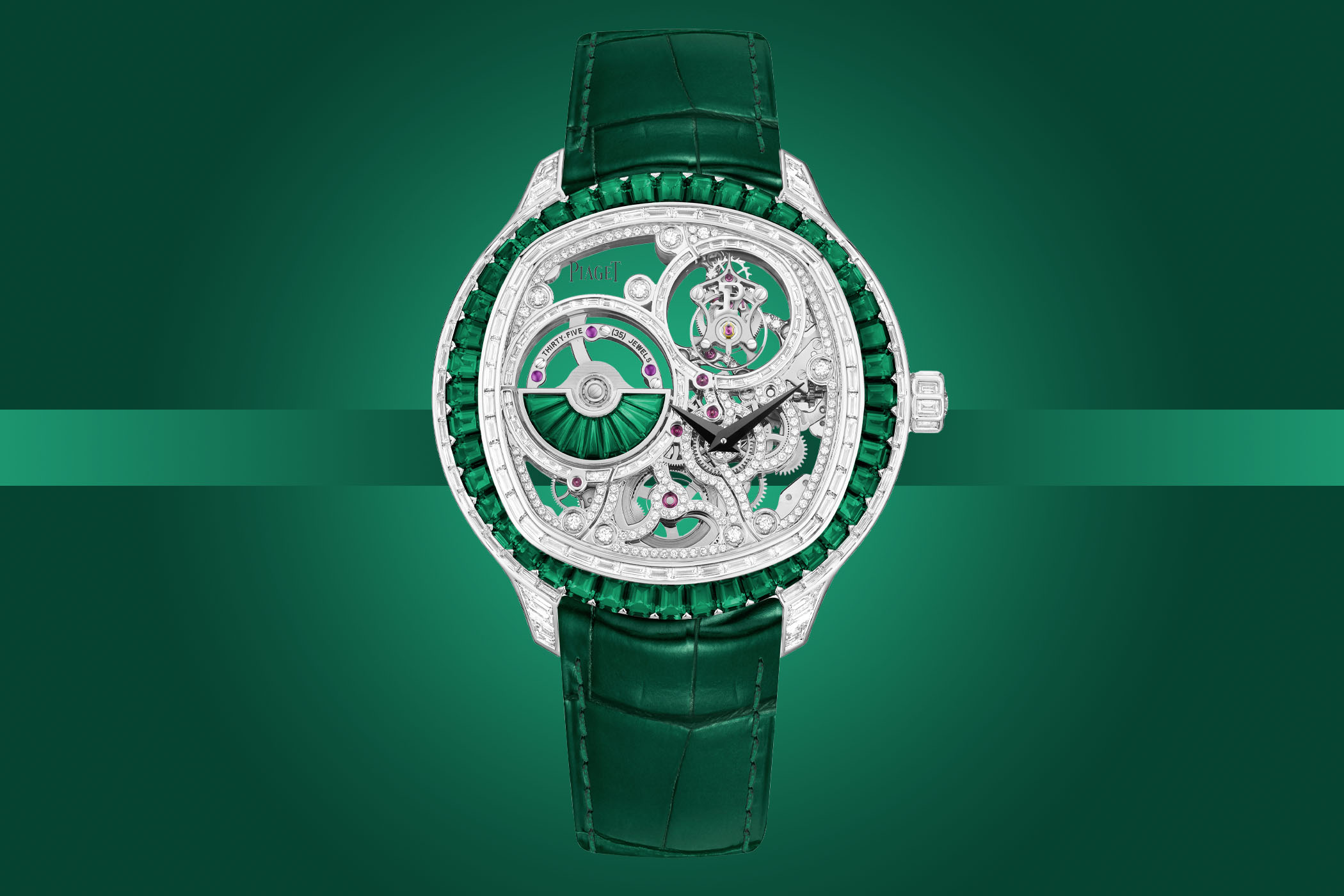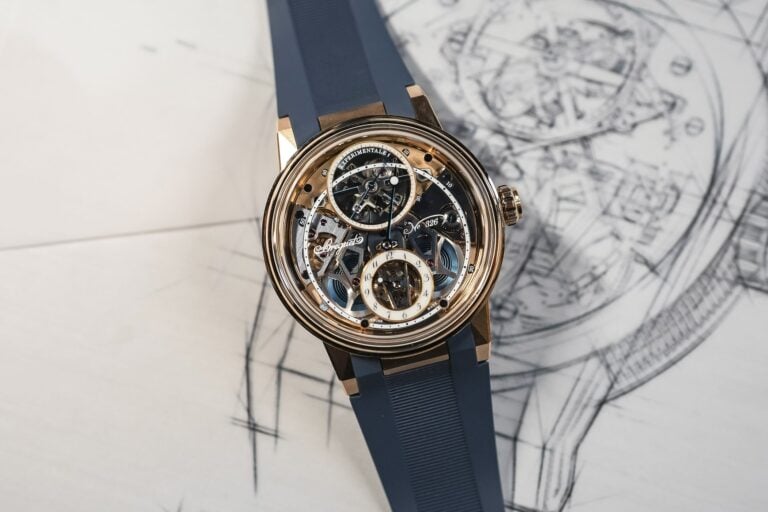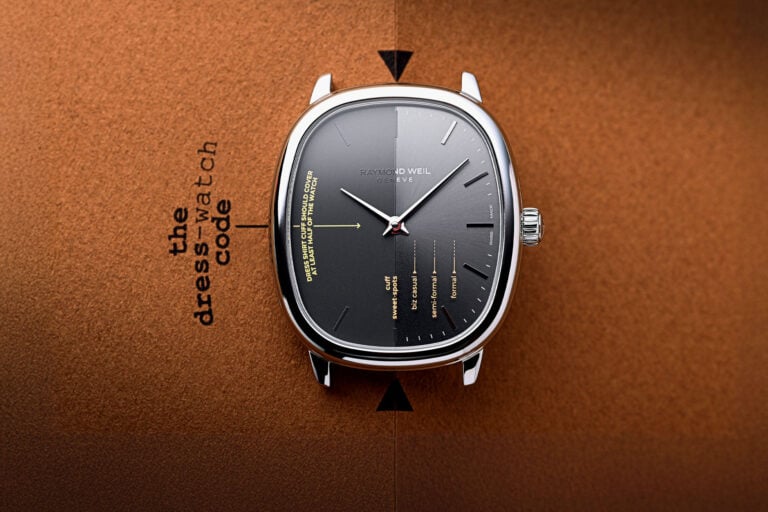The Jaw-Dropping Piaget Polo Emperador Skeleton Tourbillon High Jewellery
Piaget goes for the wow factor with this spectacular skeletonised flying tourbillon dripping with diamonds and emeralds.

Piaget is synonymous with ultra-thin movements and high jewellery watches, areas of expertise the brand started to cultivate in the late 1950s. Not many watch brands excel in both disciplines, and alongside its state-of-the-art watch manufacture outside Geneva and its historic site in La Côte-aux-Fées, Piaget owns the largest jewellery workshop in Geneva. The latest Piaget Polo Emperador is a stunning fusion of Haute Horlogerie and Haute Joaillerie, marrying an ultra-thin gem-set automatic skeletonised flying tourbillon movement to a white gold case dripping with bright green emeralds and fiery white diamonds.
Piaget’s dominion of ultra-thin movements was consolidated in its La Côte-aux-Fées manufacture with the introduction of the famous manual-winding calibre 9P in 1957, followed by the world’s (at that time) thinnest automatic movement, the calibre 12P of 1960. The latest gem-set Polo Emperador perpetuates the brand’s tradition of ultra-thin movements and is the extravagant sibling of the non-gem-set Polo Emperador Tourbillon with its ultra-thin skeletonised 1270S calibre, considered one of the thinnest automatic skeletonised flying tourbillon movements. Three years ago, Piaget released an impressive Polo Emperador Skeleton Tourbillon, fully paved with diamonds and sapphires on the case and movement.
Like the 2020 model, the new Polo Emperador is powered by the ultra-thin in-house 1207D calibre, a 214-part automatic movement that is just 6mm thick. In addition to the expertise needed to skeletonise the 14k white gold movement and expose all the mechanical components, the bridges are gem-set with a medley of 561 brilliant-cut and 62 baguette-cut diamonds with nine trapeze-cut emeralds set on the platinum micro-rotor. Even the sides of the bridges and some of the screws are set with diamonds to produce a glistening mechanical spectacle. Gem-setting a case is one thing, but gem-setting a skeletonised movement on both sides requires superlative skills.
The inverted and skeletonised architecture of the 1207D calibre offers a view of the automatic tourbillon movement from both sides of the case. Framed by circles of baguette-cut diamonds, the off-centred micro-rotor and tourbillon cage – surmounted by the letter ‘P’ to indicate the seconds – intertwine to form a figure eight and are positioned diagonally in the top half of the dial. Also off-centred, the hours and minutes appear beneath the tourbillon and are indicated by black sword-shaped hands.
Consolidating all Piaget’s in-house skills, the jaw-dropping Polo Emperador comes in a 49mm white gold case with a thickness of 10.2mm. No less spectacular, the case is fully paved with 649 brilliant-cut diamonds, 92 baguette-cut diamonds and 44 emeralds. The crown is also set with eight baguette-cut diamonds and topped by a brilliant-cut diamond.
Requiring over 47 hours to set the movement and 136 hours to set the case, the master jewellers at Piaget’s “Ateliers de l’Extraordinaire” jewellery workshops certainly had their work cut out for them.
Matching the vivid green emeralds on the case and movement, this stunning Piaget Polo Emperador Skeleton Tourbillon is attached to the wrist with a green alligator strap and an 18k white gold diamond-set buckle. It is a numbered edition, and the price is upon request.
For more information, please consult piaget.com.






